90% of people buy from the brands they follow on social media. But the role of social media in brand building is more complex than it used to be.
Brand saturation, creator communities, and more have changed the way that people interact with brands on social media. You can’t just build a brand with a great logo, quirky copy, and a pleasing palette. Audiences today are looking for something more.
The Role of Social Media in Brand Building
To successfully build your brand on social media, you can start with creating a great visual brand. But you can’t stop there. You need to dig deeper into your users and what they’re looking for online. Let’s talk about the big ideas that impact branding on social media.
1. Social media is where subcultures connect.
While pretty much everyone you know is online, they're not there to talk to just anyone. On social media, it's common for users to connect with small groups of people with similar interests.
These small groups usually stand out for a specific interest or topic. Together they look for ways to stand out from what's typical.
For example, Amino Apps is a space where members of K-Pop, Anime, and other fandoms connect. In these communities, they share original art, memes, and other content.
These online spaces empower members of subcultures a place to engage and grow their interests. They are also a powerful space for businesses to engage with vocal influencers.
Tactical tip: Target a specific group and have something useful to say.
It's tempting to go for the largest possible audience with your advertising budget. But social media has changed the way that businesses connect to an audience.
Instead of using your resources to create a big audience, seek to build an engaged one. Do your research and connect with online communities that are relevant to your business.
Once you find these groups of potential buyers, don't spam them with ads. Subgroups tend to be wary of popular culture and are quick to call out the fake and superficial.
Take time to learn about these communities and their likes and dislikes. This information can help you shape your product and make updates that can improve sales.
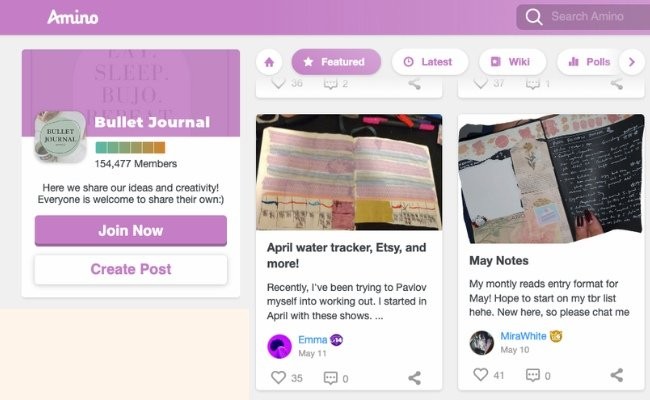
While it used to be the norm for branding to shy away from politics and other divisive topics, buyers today want brands to take a stance. When you do choose to post and respond, show your awareness of the group and how they feel about current events.
Use social media to prove that if you're not already part of the group, you have something useful to offer.
2. Every social media platform is unique.
Businesses tend to approach social media based on ROI. But it's different for users. Many things impact which platform you spend the most time using, including:
- Posting format
- Algorithms
- Brand message and values
- Privacy
- Where your friends are
Each user factors these ideas into their decision about which platform to use. And even if they have every app on their phone, they're bound to use some more than others.
These decisions lead to the data that businesses use to choose the right platform for brand building. Because there is so much data out there, brands sometimes try shortcuts.
For example, 90% of Instagram users follow at least one business. This might lead a business to build a brand only on Instagram, even if the customers they want spend more time on Pinterest.
Buzz around the brand says that most of Pinterest's users are female. But a closer look at their demographics shows that 45% also have an income over $100K.
It's important to trust your gut, but don't jump on the superficial differences. Instead, use the uniqueness of each platform to choose the right social media platform and hone your branding strategy.
Tactical tip: Choose the right platform for your target audience.
After you've built a detailed buyer persona, do a deep dive into the specifics of each platform. There is a lot to consider, including the number of users, demographics, and features. If you're not sure where to start with your review, this article can help you choose which social networks are best for your brand.
Next, create test accounts and spend some time interacting in the spaces where you think your target audience will be. This research won't only help you get a sense of which social media platforms are best for your brand. It can also help you decide what kind of brand content you want to create.
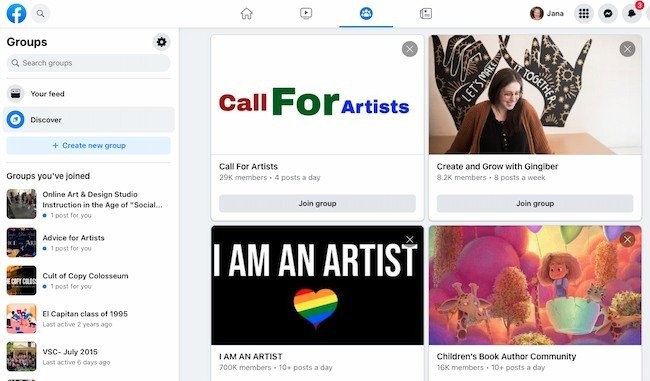
And don’t forget about emerging platforms. These could be the best place to connect your new brand with an audience that’s looking for the exciting and new.
While you CAN post the same content to every platform in an attempt to save time and resources, it's not a great idea. Each social platform is distinct. You'll want to post content that reinforces your brand identity for the specific audience on each platform.
3. The average person spends 147 minutes a day on social media.
That's a lot of time. These users are sharing and posting photos and videos. They're building their personal networks and discovering new skills, hobbies, and events. While some social media users are there to watch, many others want to take part and grab some attention.
But brands are seeing lower engagement on Instagram, Facebook, and Twitter. This shift is leading many businesses to spend more on social advertising and to post more often. But are these efforts the best strategy?
Tactical tip: Show up every day.
Consistent authentic communication builds trust and awareness. Regular posting can help your brand build consistent imagery, colors, and voice with public feedback.
But a constant flood of posts may not be the best approach for your chosen platform. In fact, algorithm-based platforms may create a frustrating experience for your followers. This guide to publishing frequency can help you create a rhythm that works.
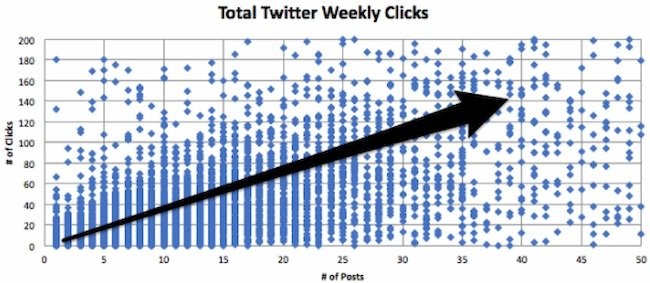
It's also important to remember that people on social media want attention just as much as you do.
An effective social media strategy should be more than a posting schedule. It's about honest engagement with a community. The best place to start engaging is by posting comments on relevant threads.
4. People are always looking for something new and interesting.
It’s difficult to create something completely new. Being creative, fun, and business-focused is even tougher. But those aren't the only challenges of building an original brand on social media.
People aren't just spending a lot of time on social media today. For many, these online communities are where people spend the majority of their time.
This means that they don't just see a meme once or twice. For 55% of Gen Z and 48% of Millenials, viral social media content is more valid than the latest song, movie, or video game.
This is a cultural shift to consider as you build your brand identity on social. Many people aren't passively consuming your brand content. They see social media content as a starting point. They want to add to or change the conversation.
People are sharing 3.2 billion images and 720,000 hours of video every day. This means that your brand messaging can't just look great on a mobile device, it has to stand out. This volume of media consumption also creates a healthy amount of skepticism. Any brand message on social media today needs to stand up to close examination by a global audience.
Tactical tip: Be yourself.
Originality can seem like an impossible goal. So, if you can’t be original, be honest. While it's tempting to riff off what's already out there, the best strategy for any brand is to just be you.
It can be uncomfortable getting personal and showing your imperfections online. It's also a huge business risk. It's not unusual for global brands to use test audiences and surveys before any campaign launches.
But with the growing awareness of social media audiences, honesty is opportunity. Influencers like Elyse Meyers and Ajani Huff are growing audiences of millions being their authentic selves.
Instead of seeking perfection, audiences are looking for brands that are clear about what they stand for and ask them to engage. Brand building this way on social media is scary, but it also may be your best path to success.
5. 76% of U.S. consumers expect brands to respond to social media messages within 24 hours.
13% expect a response within ONE hour. While most people spend an hour and a half or more on social media every day, that time isn't consecutive. According to Accurion in 2021, Americans check their phones 96 times a day.
Once they've sent a message, part of what they're checking is whether they've heard back from you.
But most businesses don't check their social media accounts on their phones. They might schedule social media posts from a third-party platform but rarely log in. A customer service team might check social messages once a week or less if social isn't connected to the tool they use to respond to customer inquiries.
To put it simply, there are a lot of chances for a brand to miss customer outreach. That can harm your branding efforts.
Tactical tip: Talk back.
To develop your brand on social media, find a way to be available to anyone who reaches out. This might mean:
- Shared social media schedules
- Clearly posted hours to set response expectations
- Community message boards
- Connecting your service portal to social media
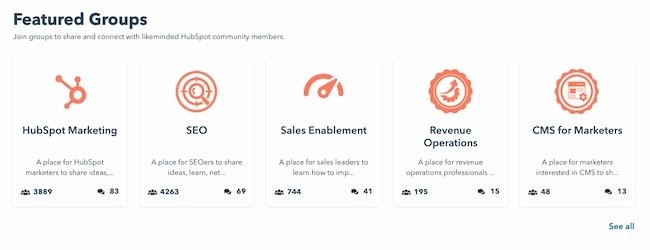
85% of surveyed service professionals say that customers are likely to share their experiences with others. Whether it's positive or negative feedback, social media is for sharing opinions.
What can your brand do to make it easy for you to give your customers the social media service they expect?
6. Social media audiences are more likely to listen to each other than a brand.
Social listening can help you pay attention to what people are saying about your brand. But how can you insert yourself into the conversation?
Tools like AdRoll can serve ads that build awareness of your brand through social media, but this strategy may impact trust. It can erode the brand relationship if your brand shows up too often or in a place the user isn't expecting.
To find their favorite brands, most people contact someone they're comfortable with. 60% of shoppers refer to friends and family for shopping advice.
So, the best way to build your brand is through networks of connections, not just specific users.
Tactical tip: Leverage influencers.
Social media influencers and creators are starting to impact buyer decision-making. The reach of social media makes it easy for influencers to build your brand with their reputation.
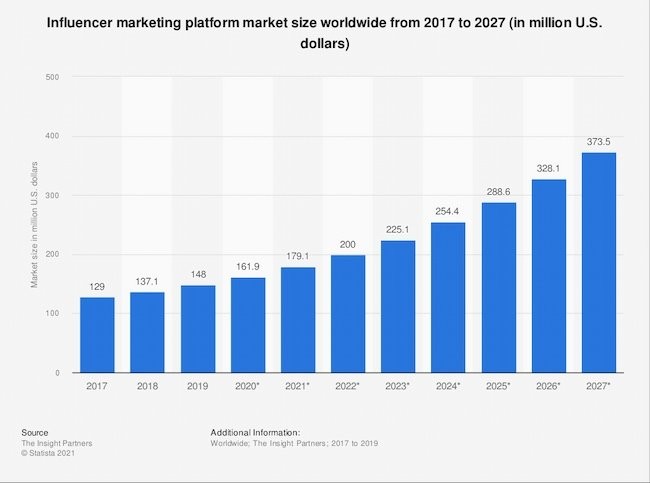
And an influencer doesn't have to be one of the top influencers on Instagram to make a difference. Nano influencers can be less expensive to work with and may be more effective at targeting the right subgroup to boost your brand identity.
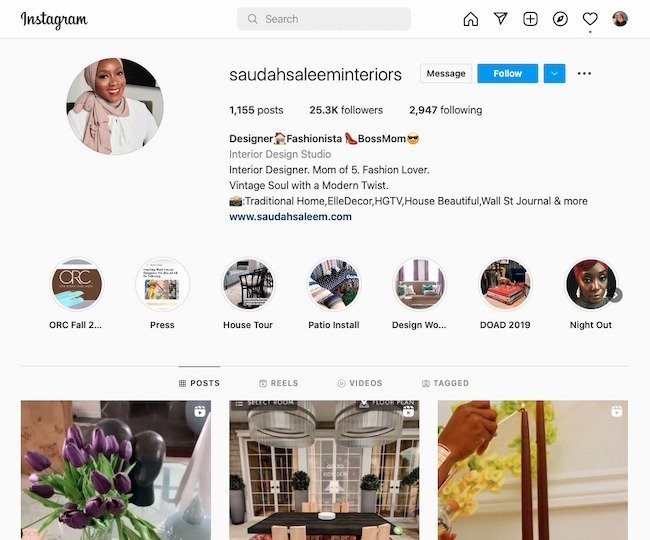
If you haven't already started working with influencers for branding, start now.
7. Audiences want brands to keep up with what’s happening.
Your brand isn't just competing with friends, family, and other brands for their attention on social media. According to Pew Research in 2021, about half of the consumers in the U.S. get their news from social media.
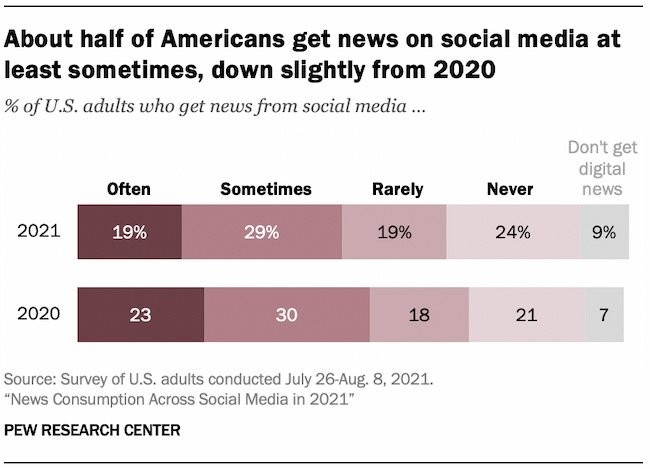
While brands that comment on current events sometimes get it wrong, users want to know where brands stand in politics and culture. And 58% of consumers feel that social media is the best place for these conversations.
Social media gives you a chance to add to important conversations as they're happening. This helps you define your brand by its character, not just how it looks and sounds.
Tactical tip: Use data to keep pace with your audience.
Your audience also wants to know what you stand for as a company. They want to know how you are putting those sentiments into action.
But if you are tight on resources, it can be tough to know what's most important. Many brands get stuck figuring out how to get their ideas in front of their audience at the right time.
Social media offers extensive data for brand analysis and improvement. You can use this data, along with alerts and social listening, to guide your social content.
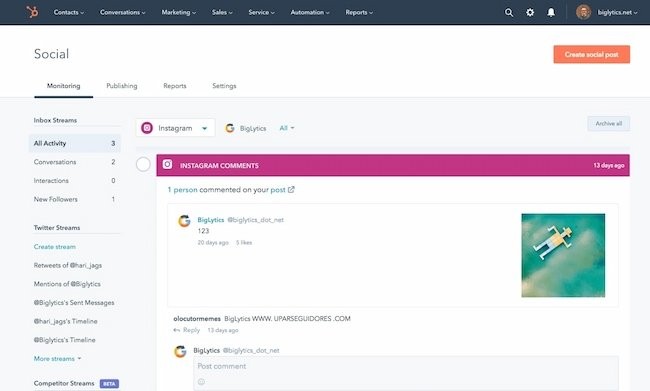
For example, using HubSpot's social media management software you can track specific keywords. Besides tracking brand mentions, you can use this tool to follow relevant news in the areas that you and your users care about most.
6 Examples of Brands Thriving on Social Media
Now that you’ve got an idea of what you need to do, let’s take a look at some brands that rock branding on social media.
1. HubSpot
There are a few key ways we encourage discussion of the HubSpot brand online.
First, build an awesome product. If you create a powerful product, people will talk about it and build your brand for you. You can't pay for comments like this one:
They're authentic, and the only way to cultivate them is by creating an authentically great product.
Next, create a strong company culture. Share information across your company and encourage your employees to use social media. If you do this, and you hire great employees, they will help define your company's brand for you every day.
2. Seasum
Also known as TikTok leggings, Seasum’s high waist yoga leggings took over the popular social video platform in late 2020. Hashtags like #TikTokMademeBuyIt and #tiktokleggings amplified the brand's reach. And most videos show users’ surprise and delight as they try on the leggings and see their lifting and shaping effect for the first time.
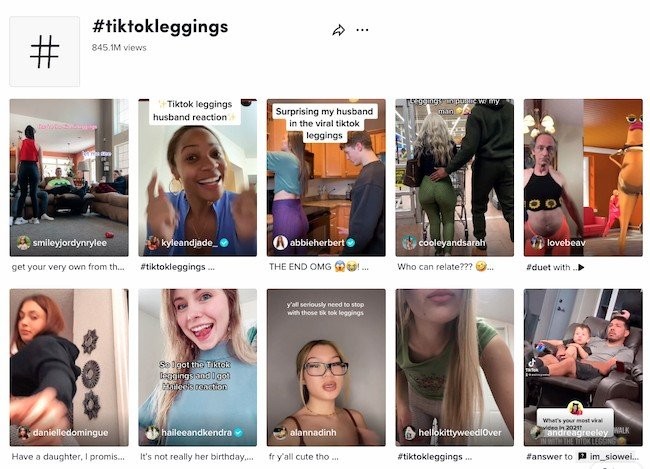
The leggings continued to dominate in 2021. The story of their viral popularity got a boost from many media outlets including Seventeen, People, and ET Online. To succeed on social media, start with a great product.
3. Planet Money
This NPR program is a favorite on social media because their social strategy matches the vibe of its programming. It uses Twitter to answer listener questions, creates offbeat low-fi educational videos for TikTok, and its Facebook posts offer a simple news feed of recent articles.
4. Louis Vuitton
This luxury brand uses powerful visuals, including mesmerizing product videos, to cement brand impact on social media. Some luxury brands were slower to embrace social platforms. But Louis Vuitton engaged early and continues to shift its strategy with the times. A recent example is this celebrity collaboration with the pop group BTS.

5. Oreo
This brand takes every potential opportunity to engage audiences on social media. They do this with careful planning and thoughtful promotion of user-generated content.
Oreo uses current events, cultural movements, and customer suggestions in a considerate, fun, and respectful way. These are long-term strategies that come off as simple but take awareness, sensitivity, and effort.
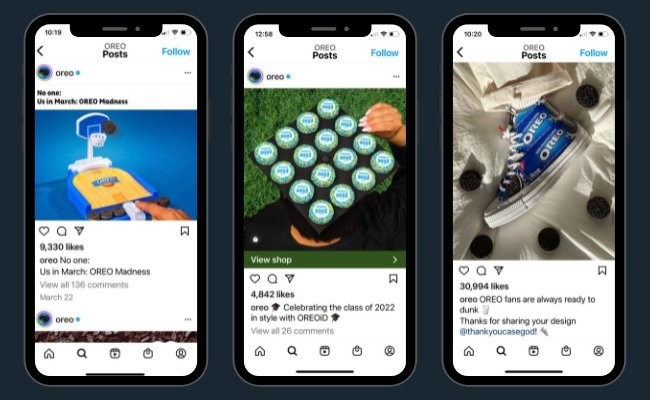
Whether they’re commenting on the Super Bowl or collaborating with Stranger Things in India, this brand has some great examples of real-time social engagement.
6. Fenty Beauty
Another way to stand out is to support creators. Fenty Beauty launched its own TikTok house in 2020. Creating a space for creators to experiment and push boundaries amplified the voice of the brand while also expanding its reach.
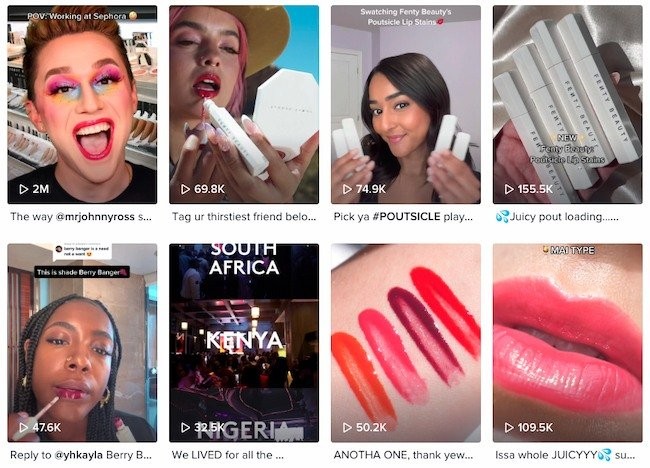
7. Vans
This brand learned about the value of collaboration early on, sponsoring members of the Zephyr skateboard team in the late 70s. They’ve succeeded by continuing to highlight the value of creator communities. One example is this 2022 project with artist communities across the country.

If you’re looking for more inspiration, check out these branding success stories for the most popular social media platforms:
You Are the Secret to Social Media Brand Building
Branding on social media isn’t the same as it was just five years ago. But any brand can still grow with a personal touch and the power of social media. Keep building your brand, following your instincts, and putting yourself out there. You never know what could happen.
Editor's note: This post was originally published in October 2009 and has been updated for comprehensiveness.

